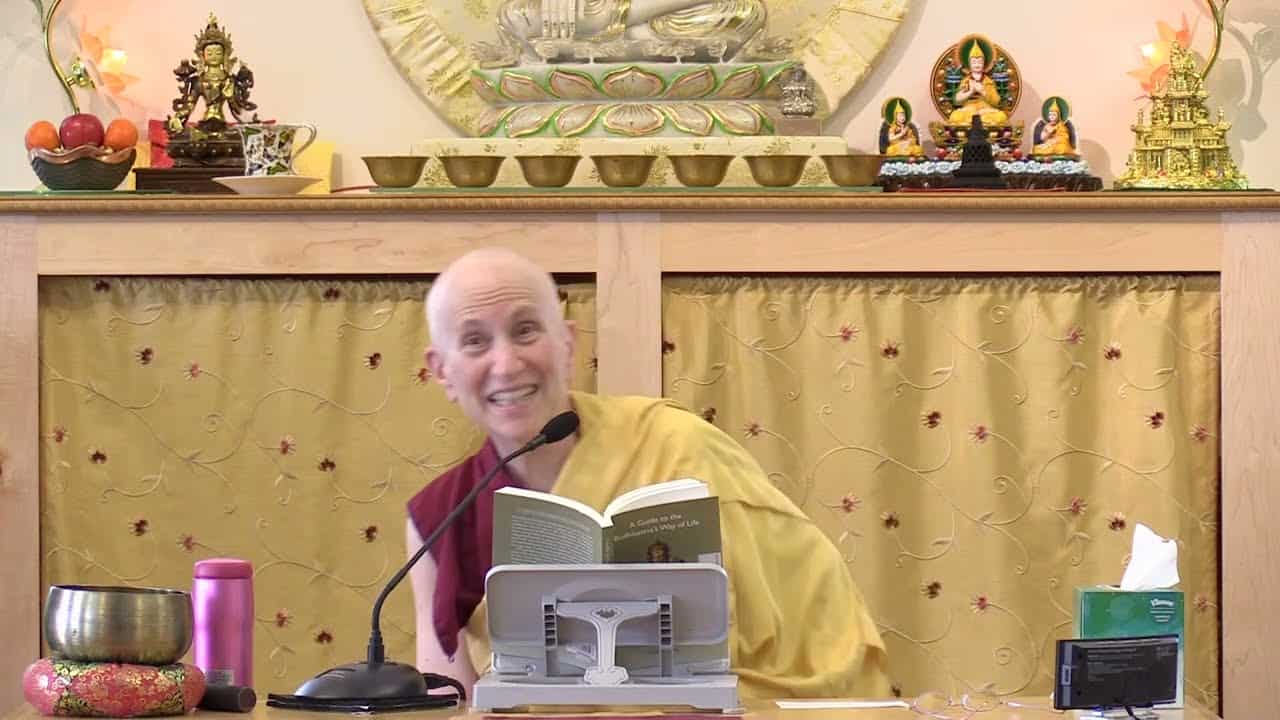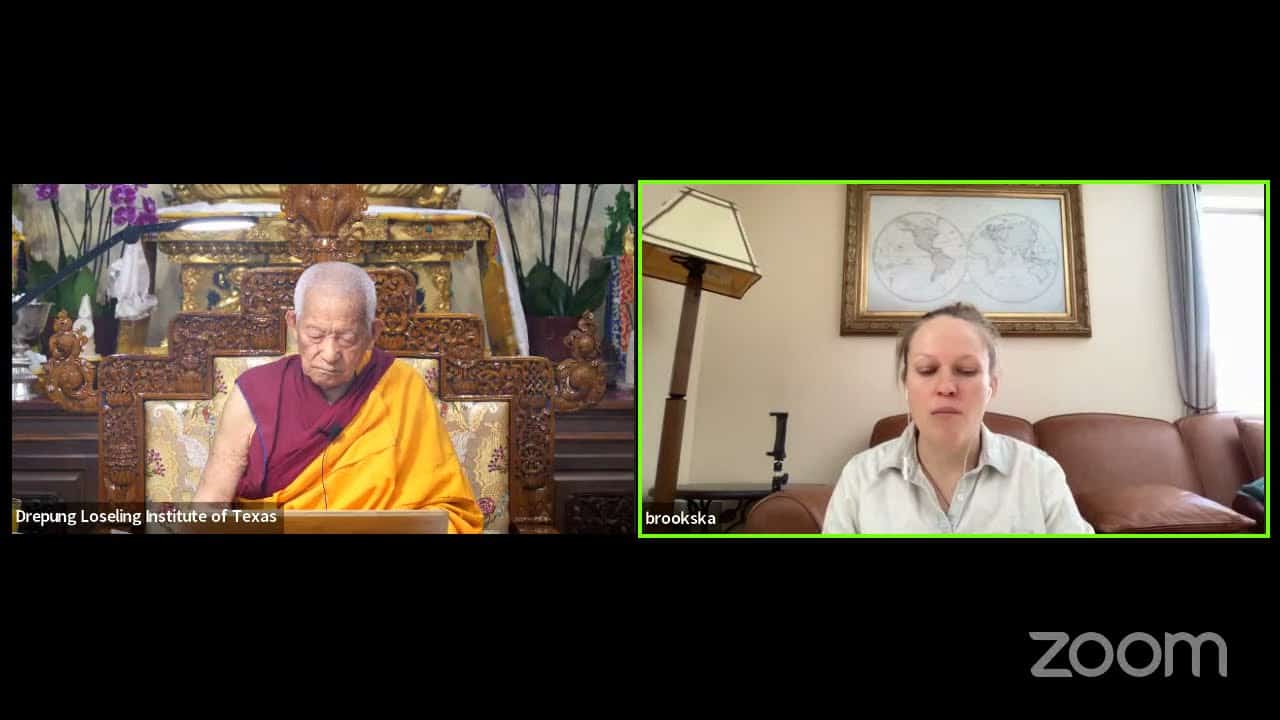Clinging and renewed existence
54 Samsara, Nirvana, and Buddha Nature
Part of an ongoing series of teachings (retreat and Friday) based on the book Samsara, Nirvana, and Buddha Nature, the third volume in The Library of Wisdom and Compassion series by His Holiness the Dalai Lama and Venerable Thubten Chodron.
- Clinging to sense pleasures and desirable objects
- Clinging to different views
- Views of extremes, wrong views as supreme, wrong views
- View of personal identity
- View of rules and practices
- Distorted notions of ethical conduct or path to liberation
- Clinging in Pali tradition
- Relationship between three types of craving and four types of clinging
- Formative actions, karmic seed and having ceased
- Renewed existence in entering stage and entered stage
Samsara, Nirvana, and Buddha Nature 54: Clinging and Renewed Existence (download)
Contemplation points
- His Holiness the Dalai Lama says: “Clinging to sense pleasures and desirable objects arises easily for us beings in the desire realm and dominates our lives.” Identify for yourself in your own life how clinging to sense pleasure and desirable objects dominates your life.
- What are the different types of wrong views that we can cling to? Make some examples of each from your own life and the world around you. How do these views limit you? How might they contribute to depression and anxiety? How do they cause harm to ourselves and others?
- The “clinging to a doctrine of self” is based on I-grasping, holding onto “mine” (our own “I”) in an attempt to exist in a very solid way. To take care of and reinforce that strong sense of “I,” we create so much destructive karma. How have you seen this in your own life?
- What specifically do you long for that you don’t have? What do you already have that you hold onto quite fiercely? How might this be detrimental to your happiness and a hindrance in spiritual practice?
- Create a chart of the three types of craving and the four types of clinging. Make examples of each combination and how they might lead to harmful actions (a. Craving for sense pleasure, b. Clinging to rules and practices, c. Craving for existence and d. Craving for non-existence).
- How do you feel when you really think about the reality of renewed existence in samsara?
Venerable Thubten Chodron
Venerable Chodron emphasizes the practical application of Buddha’s teachings in our daily lives and is especially skilled at explaining them in ways easily understood and practiced by Westerners. She is well known for her warm, humorous, and lucid teachings. She was ordained as a Buddhist nun in 1977 by Kyabje Ling Rinpoche in Dharamsala, India, and in 1986 she received bhikshuni (full) ordination in Taiwan. Read her full bio.


